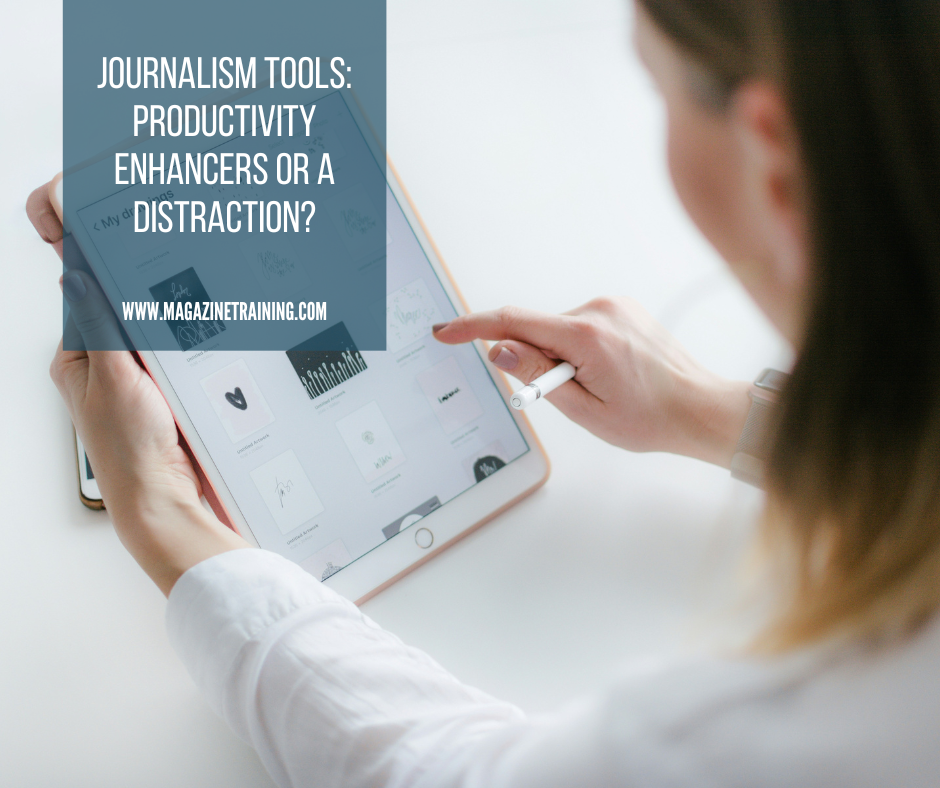
New day, new tool. Every day we hear of a new app, a new gadget, a new platform. If you are like me — someone who constantly follows the latest tech trends — you might feel overwhelmed by all this.
I use a lot of tools to improve my productivity, and to reduce friction when I produce content.
When you are a working journalist, should you experiment with these tools? Would they help you write a better story, or might they waste your time as you try to figure them out? Maybe they even pose a security risk?
I grapple with these questions as I use digital tools, but I still believe the benefits outweigh the potential risks.
Here is a list of some of the tools that have made me a better writer, author and storyteller:
- Grammarly: This is my absolute favorite tool as I like to send my writing drafts error-free to make my editors happy. Grammarly always catches typos and grammatical mistakes that I miss. It also suggests text alternatives to make sentences easier to read. You can use the free version, but I recommend the paid one for better integration across different platforms.
- Drafts: I use this app to write my drafts before publishing them online. I love the fact that it syncs between all my Apple devices. I use the free version, which is more than enough for me.
- Apple Notes: I use my iPhone Notes to capture my ideas. I create folders, and whenever the inspiration strikes, I stop and jot my thoughts down immediately before I forget them. This is a native app that comes with Apple devices.
- Airtable: This is more of an organizational tool than a writing one, but it helps me map out my social media content and make sure I have something to publish every day. I use the free version.
- Readwise: I use this to save Twitter threads and excerpts from books on my Kindle that I plan to reference later in my writing. I invest in the paid version for better integration across all my media consumption devices.
- Scrivener: I used this to write my second novel, and it was terrific. It helped me map out my chapters, keep track of my characters’ physical descriptions and streamline my research process. It’s also beneficial for journalists and writers working on their non-fiction books. This one is a paid tool.
- Happy Scribe: This tool transcribes voice memos, especially if you get answers from your sources via WhatsApp — another app that many journalists are using heavily nowadays. This is a paid tool where you get charged for credits.
- Otter: You can use this tool to record your thoughts on the go, and it will transcribe them into text. It’s easy to use and very powerful. I started with the free version and then moved to the paid version.
Productivity enhancers or distraction?
While some like me hail the benefits of these tools, others are more skeptical.
Jackie Spinner, professor of journalism at Columbia College Chicago, said that while she uses some digital tools for her stories, “technology can fail,” and some of these tools “can slow you down when you are on a deadline.”
“I like that these writing tools exist, and I do think many of them may simplify the process, particularly for long-form journalism. But, there are places in the world where cloud-based data storage and the transfer does not work as well as it does in developed countries,” Spinner told IJNet.
She added that these tools are not always secure. “I use my own short-hand in my notebooks. Nobody can break that code.”
by Natasha Tynes, International Journalists’ Network
Photo by Marek Levák on Unsplash
Related posts
Magazine Training International’s mission is to encourage, strengthen, and provide training and resources to Christian magazine publishers as they seek to build the church and reach their societies for Christ.

